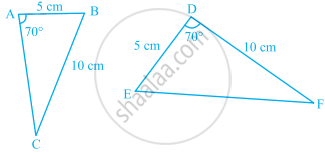Advertisements
Advertisements
Question
In the given figure, DE = IH, EG = FI and ∠E = ∠I. Is ∆DEF ≅ ∆HIG? If yes, by which congruence criterion?
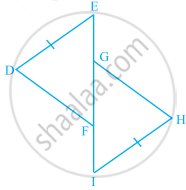
Solution
Given, EG = FI
EG + GF = FI + GF ......[Adding GF on both sides]
EF = IG
In ΔDEF and ΔHIG,
DE = IH ......[Given]
EF = IG ......[Proved above]
∠E = ∠I ......[Given]
By SAS congruence criterion, ΔDEF ≅ ΔHIG
APPEARS IN
RELATED QUESTIONS
Given below are measurements of some parts of two triangles. Examine whether the two triangles are congruent or not, by using the SAS congruence rule. If the triangles are congruent, write them in symbolic form.
∆ABC, AB = 4.5 cm, AC = 4 cm, ∠A = 60°.
∆DEF, DE = 4 cm, FD = 4.5 cm, ∠D = 55°.
In Fig,

AB = AC and AD is the bisector of ∠BAC.
(i) State three pairs of equal parts in triangles ADB and ADC.
(ii) Is ∆ADB ≅ ∆ADC? Give reasons.
(iii) Is ∠B = ∠C? Give reasons.
Consider the given pairs of triangles and say whether each pair is that of congruent triangles. If the triangles are congruent, say ‘how’; if they are not congruent say ‘why’ and also say if a small modification would make them congruent: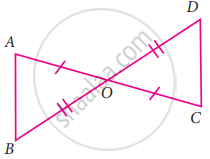
In the given figure, ΔBCD is isosceles with base BD and ∠BAE ≡∠DEA. Prove that AB ≡ ED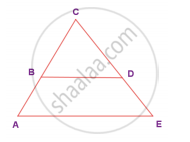
For the given pair of triangles state the criterion that can be used to determine the congruency?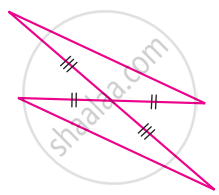
Construct a triangle ABC with given conditions.
AB = 7 cm, AC = 6.5 cm and ∠A = 120°
Construct a triangle PQR with given conditions.
∠P = 115°, ∠Q = 40° and PQ = 6 cm
In ∆ABC and ∆PQR, ∠A = 50° = ∠P, PQ = AB, and PR = AC. By which property ∆ABC and ∆PQR are congruent?
In the given figures, two triangles are congruent by RHS.

In the given figure, which pairs of triangles are congruent by SAS congruence criterion (condition)? if congruent, write the congruence of the two triangles in symbolic form.
